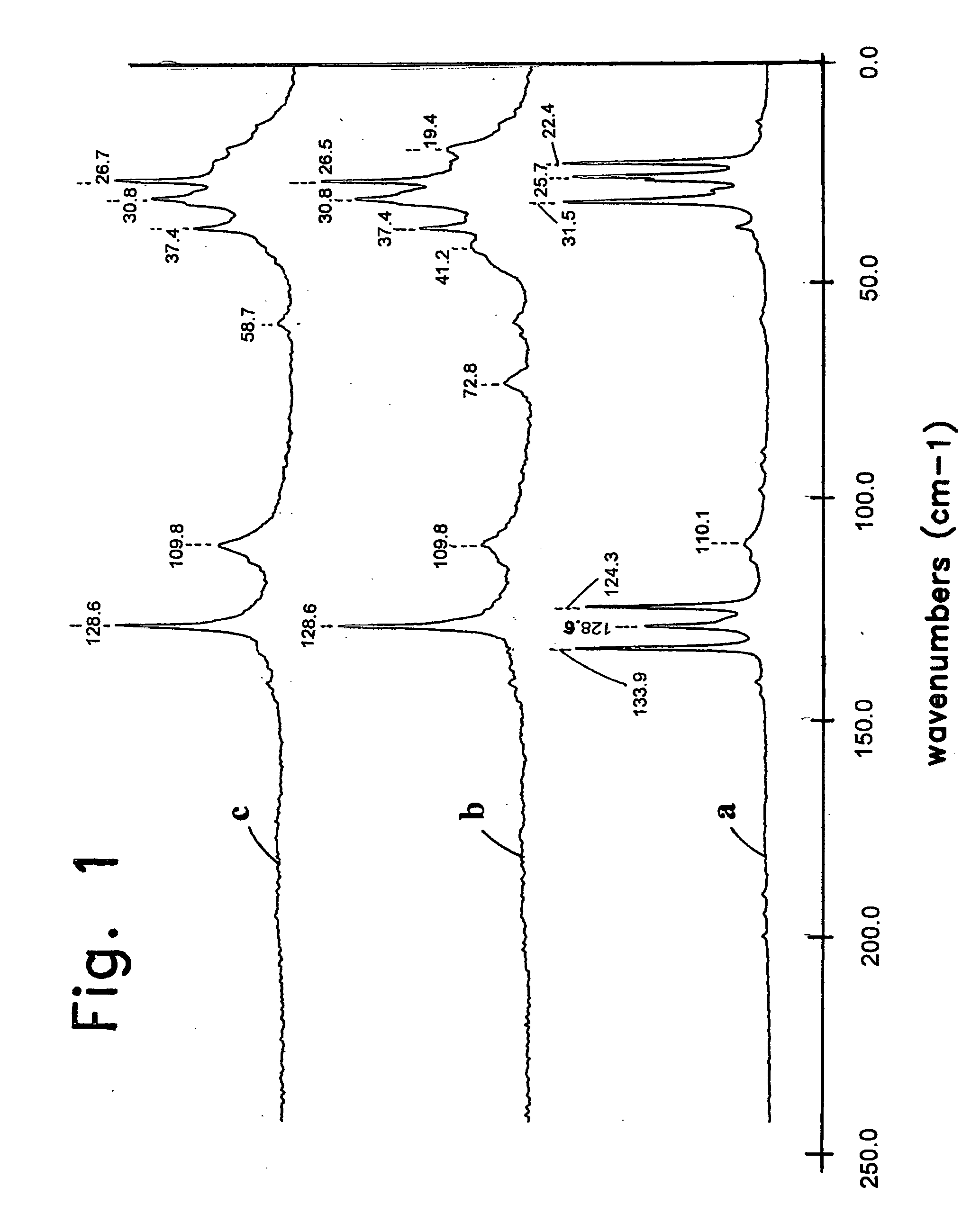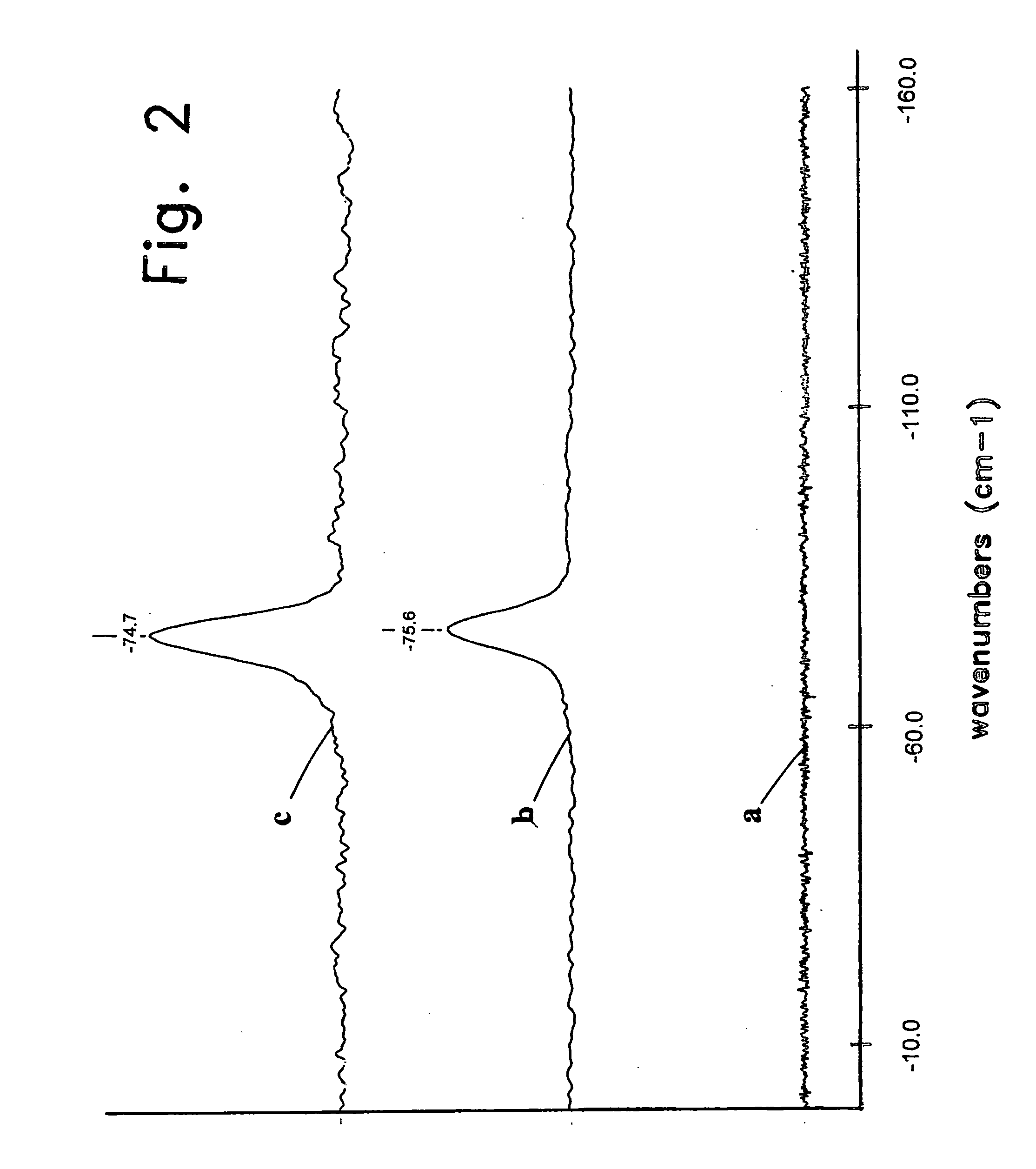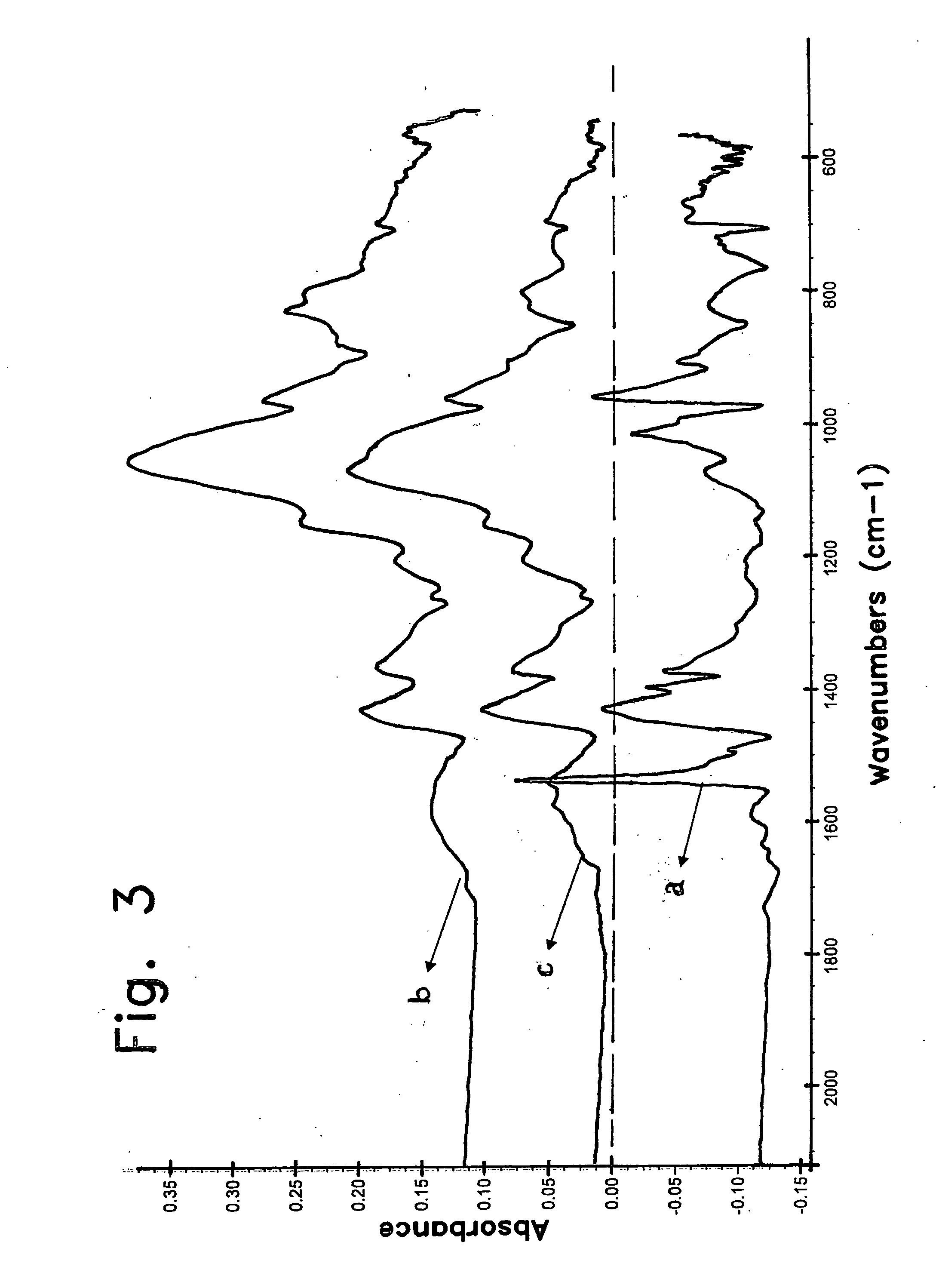Silicon-modified crumb rubber composition
a technology of crumb rubber and carbon fiber, which is applied in the field of recycling tires, can solve the problems of uncatalyzed reaction, reduce the important functional properties of tires such as high strain modulus and tensile strength, and scrap millions of tires each year, and achieve the effect of high carbon fiber (c—si) bonding
- Summary
- Abstract
- Description
- Claims
- Application Information
AI Technical Summary
Benefits of technology
Problems solved by technology
Method used
Image
Examples
example 1
[0035] This example shows the preparation of a silicon-modified crumb rubber in a solvent with and without an added catalyst.
[0036] (A) Platinum Catalyzed Reaction.
[0037] A four neck reactor was fitted with mechanical stirrer, a N2 inlet, and a thermocouple. The flame dried reactor was purged with N2 for 30 minutes and to the flask was added pre-dried, 200 g of crumb rubber, 2.5 L of toluene and platinum catalyst, (1 mL of Karstedt's catalyst (2.1-2.4% platinum concentration in xylene) [1,3-divinyltetramethyldisiloxane-Pt complex] or 1.3 g (0.0031 mol) of chloroplatinic acid in 10 mL isopropanol. The mixture was stirred for 30 minutes and 100 g (0.738 mol) of trichlorosilane was added as one portion. The reaction proceeded at 45° C. for 4 days and toluene was distilled off at 80° C. using a short path distillation apparatus. After removal of the toluene, 2.5 L chloroform was added to the reactor and stirred for 1 hour to extract all unreacted chlorosilane. The chloroform was remov...
example 2
[0044] The reaction described in Example 1 above was essentially repeated except that the time period for the reaction was one day. The silicon content of the modified crumb rubber prepared using Karstedt's catalyst was 4.0 wt % (with a macro-ash wt % of 19.5 wt %), and the silicon content of the crumb rubber prepared in the self-catalyzed reaction was 3.4 wt % (with a macro-ash content of 12.5%).
example 3
[0045] This example shows the preparation of a silicon-modified crumb rubber using a catalyst in a solvent a various levels of the silicon hydride.
[0046] The reaction in Example 2 above for the platinum catalyzed reaction was essentially repeated, except that the concentration of the trichlorosilane was 5 wt %, 12.5 wt % and 50 wt %. For 5 wt %, the silicon content of the modified crumb rubber prepared was 1.7 wt % (and the macro-ash content was 6.0 wt %). For 12.5 wt %, the silicon content of the modified crumb rubber prepared was 2.6 wt % (and the macro-ash content was 8.1 wt %). For 50 wt %, the silicon content of the modified crumb rubber prepared was 3.3 wt % (and the macro-ash content was 10.2 wt %).
PUM
| Property | Measurement | Unit |
|---|---|---|
| diameter | aaaaa | aaaaa |
| size | aaaaa | aaaaa |
| Time | aaaaa | aaaaa |
Abstract
Description
Claims
Application Information
 Login to View More
Login to View More - R&D
- Intellectual Property
- Life Sciences
- Materials
- Tech Scout
- Unparalleled Data Quality
- Higher Quality Content
- 60% Fewer Hallucinations
Browse by: Latest US Patents, China's latest patents, Technical Efficacy Thesaurus, Application Domain, Technology Topic, Popular Technical Reports.
© 2025 PatSnap. All rights reserved.Legal|Privacy policy|Modern Slavery Act Transparency Statement|Sitemap|About US| Contact US: help@patsnap.com



